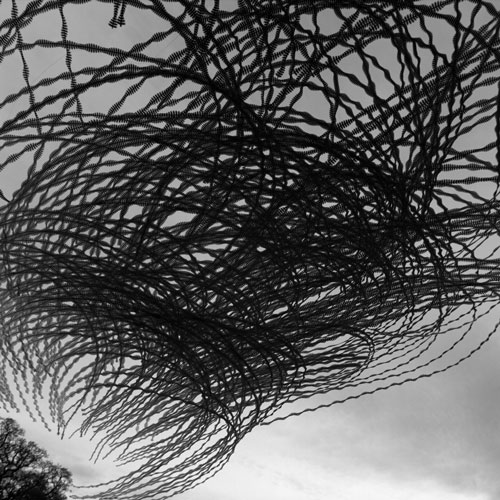The sight of a flock of birds moving together in perfect synchrony, like a giant airborne super-organism, has fascinated and perplexed people since ancient times. Some Victorian naturalists were so baffled by the spectacle, they thought the birds must be communicating telepathically. How else could hundreds, or even thousands of individuals, coordinate their movements so beautifully? The answer to this age-old question began to emerge through physics models, which showed that cohesive collective behaviour can arise if every individual in the flock responds to its neighbours following simple, identical rules. However, in reality, individuals of many species (including, of course, humans) are bonded by social relationships with partners and kin. New research, funded by the Human Frontier Science Program, shows that these relationships are maintained within flocks, transforming the properties of the flock as a whole.

Figure: Photograph combining all of the images collected from one camera during the passage of a jackdaw flock. Each ribbon is the path taken by a single bird, with oscillations in the ribbons show the wingbeats of each individual. Credit Hangjian Ling & Guill McIvor.
This interdisciplinary research project brought together biologists Alex Thornton and Guill McIvor (University of Exeter, UK), physicists Nicholas Ouellette and Hangjian Ling (Stanford University, USA) and computer scientist Richard Vaughan (Simon Fraser University, Canada) to study flocks of jackdaws, highly social birds of the crow family that form life-long pair bonds. Using an array of high-speed, synchronised cameras placed in muddy fields in Cornwall, in the far south-west of England, the team reconstructed the 3D movements and wingbeat frequency of all the individuals in flocks that flew overhead, on their way to their winter roosts. This revealed that, like friends in a human crowd, pairs of jackdaws stick close together when flying at high speed within large flocks.
This social structure within flocks produces important conflicts of interest. Paired birds benefit from keeping track of their mate and, because they are less responsive to the movements of other flockmates, they flap their wings at a lower rate, saving energy in flight. On the other hand, the presence of pairs within flocks imposes costs on the flock as a whole, reducing the responsiveness of the flock to disturbances like predator attacks.
These findings overturn our current understanding of collective animal behaviour. Far from being ‘mindless’ agents following identical rules, animals in many species may need to use sophisticated cognitive processes to recognise and track specific individuals when moving as part of a group. In the long-term, insights from complex animal societies may help to inspire the design of artificial collective systems where different types must respond to each other in different ways.
Nature Ecology & Evolution blog post by co-author Guill McIvor


































